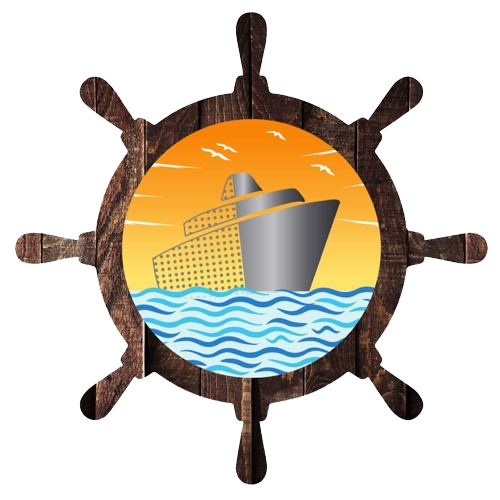What Is a Mast in a Ship? Functions, Types & Importance Explained Simply
Have you ever noticed a tall vertical pole rising from the top of a ship and wondered what it’s for? That structure is called a mast, and even though we often associate masts with old sailing ships, they play a crucial role in modern vessels too.
In this blog, we’ll break down everything you need to know about masts in ships, their purpose, types, and importance — especially helpful for maritime students and aspiring seafarers.
What Is a Mast in a Ship?
In simple words, a mast is a vertical structure mounted on the deck or superstructure of a ship. It serves as a platform to hold important navigation, communication, and signal equipment.
Unlike traditional sailing ships that used masts to support sails, modern ships (cargo vessels, tankers, navy ships) use masts primarily for technology and operations.
Main Functions of a Ship Mast
Here are the key roles a mast plays on modern ships:
- Holds Radar and Antennas:
Most radars and satellite antennas are placed high up to increase signal range and reduce obstructions. - Mounts Navigation and Signal Lights:
Mast carries essential lights like anchor light, masthead light, and others, as per COLREG rules. - Supports Communication Equipment:
Radio antennas, AIS transmitters, GPS, and other tools are mounted for proper functioning. - Displays Flags or Signal Shapes:
In some cases, masts are used to hoist flags (national or signal flags) or shapes (like ball, diamond) for navigational signaling. - Acts as Lookout Point (Old Ships):
Historically, masts had crow’s nests for lookouts, especially on warships and exploration vessels.
Types of Masts on Ships
Depending on the position and function, ships may have one or more of the following masts:
1. Foremast:
Located near the front (bow) of the ship. It often holds forward lights and sensors.
2. Mainmast:
Usually the tallest mast located amidships (center). Carries radar, lights, antennas.
3. Mizzenmast:
Located near the aft (stern) of traditional sailing ships. Rare on modern vessels.
4. Tripod Mast / Lattice Mast (Naval Ships):
Used by warships and naval vessels for extra strength and space to mount weapons and radar systems.
Materials Used in Masts
Masts need to be strong yet lightweight. Common materials include:
- Steel: Most durable and used in commercial ships.
- Aluminum: Lightweight and rust-resistant.
- Composite materials: Advanced naval ships may use fiber-reinforced materials for better weight distribution and stealth properties.
Examples of Masts on Different Types of Ships
- Cargo Ships: Short, functional masts with radar and lights.
- Tankers: Similar setup with added signal systems.
- Cruise Ships: Stylish masts sometimes integrated into the funnel structure.
- Naval Ships: Highly complex with multiple antennas, radars, and weapon systems.
Visual: Where Is the Mast Located on a Ship?
(Insert labeled diagram of a ship with mast highlighted)
Alt Text: “Modern ship mast used for radar, lights, and communication equipment”
Why Masts Still Matter Today
Even without sails, masts are critical to ship operations. From navigation safety to global communication, a mast acts as the backbone for many modern marine technologies.
Conclusion
A mast on a ship is not just a tall pole—it’s a command center for lights, radars, antennas, and signals. Whether you’re a GP Rating aspirant, a GME student, or someone preparing for maritime exams, knowing the structure and purpose of a ship’s mast gives you an edge.
Disclaimer :- The opinions expressed in this article belong solely to the author and may not necessarily reflect those of Merchant Navy Decoded. We cannot guarantee the accuracy of the information provided and disclaim any responsibility for it. Data and visuals used are sourced from publicly available information and may not be authenticated by any regulatory body. Reviews and comments appearing on our blogs represent the opinions of individuals and do not necessarily reflect the views of Merchant Navy Decoded. We are not responsible for any loss or damage resulting from reliance on these reviews or comments.
Reproduction, copying, sharing, or use of the article or images in any form is strictly prohibited without prior permission from both the author and Merchant Navy Decoded.


